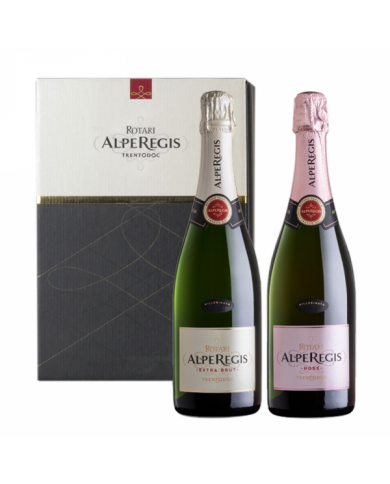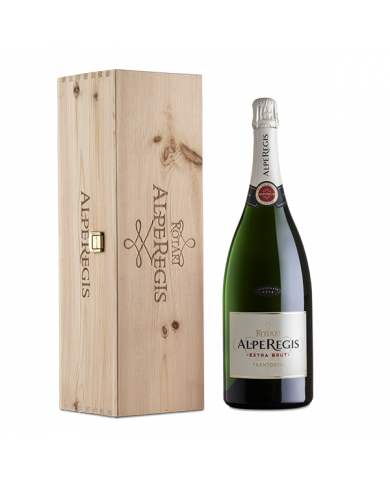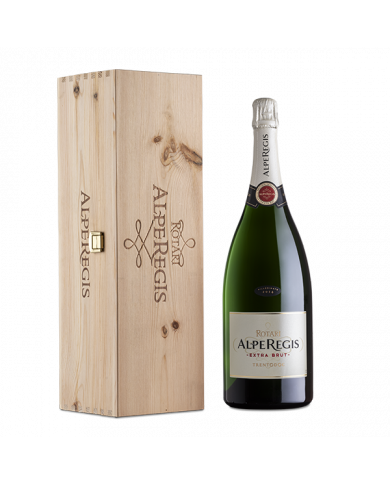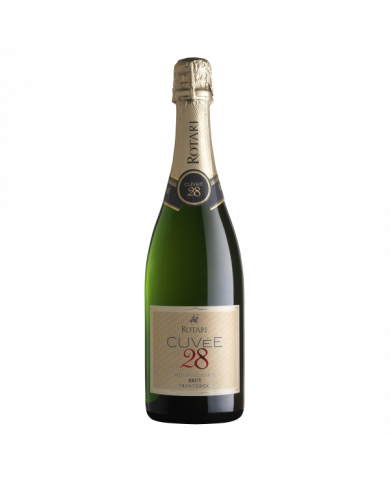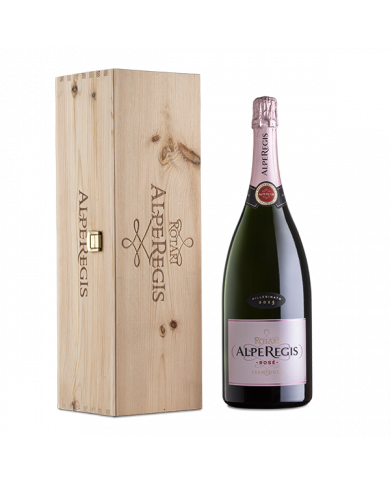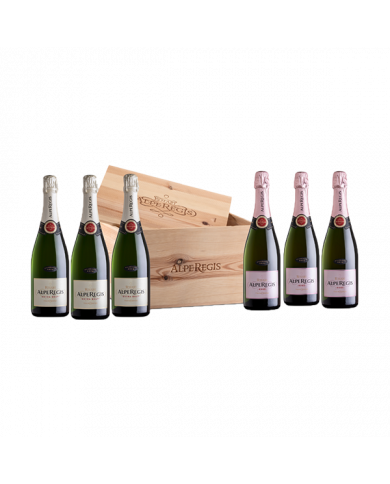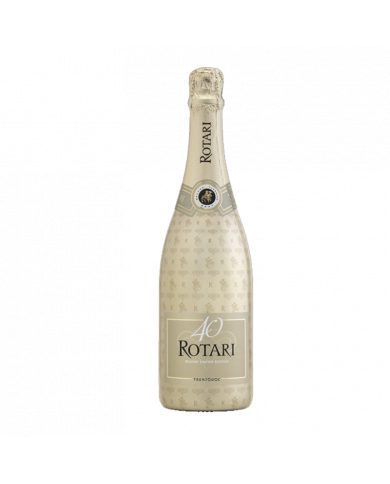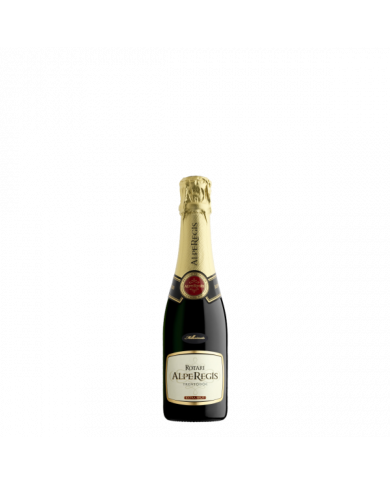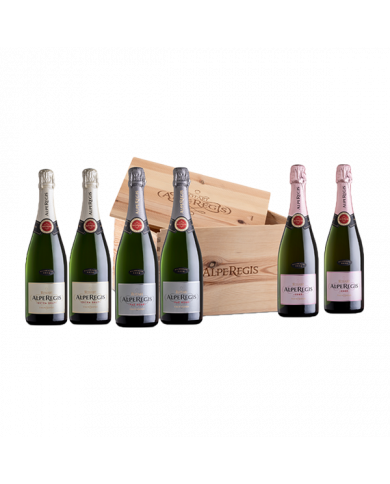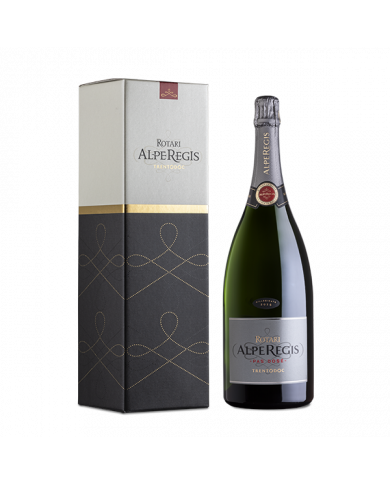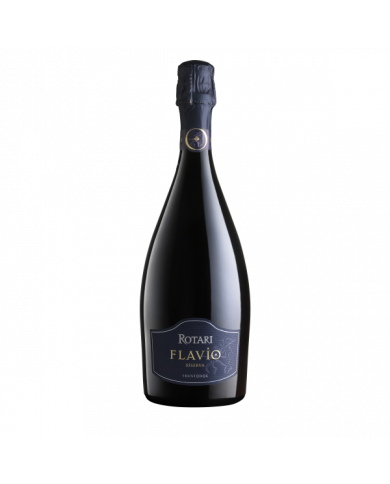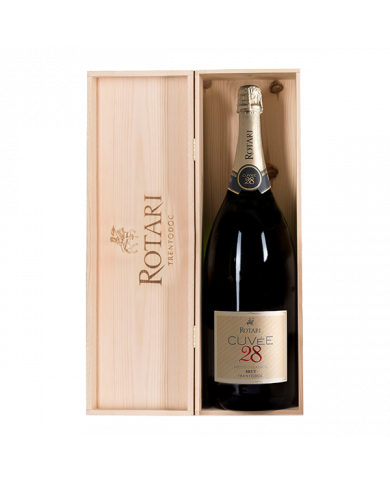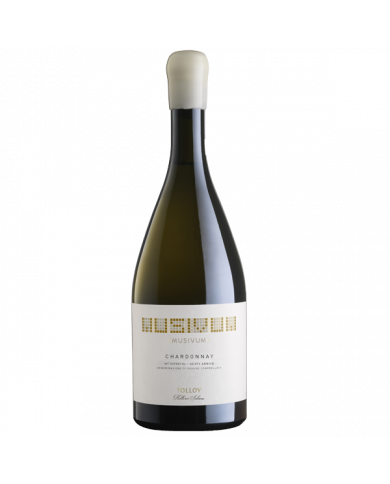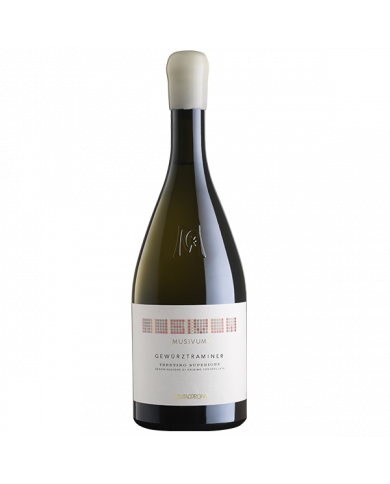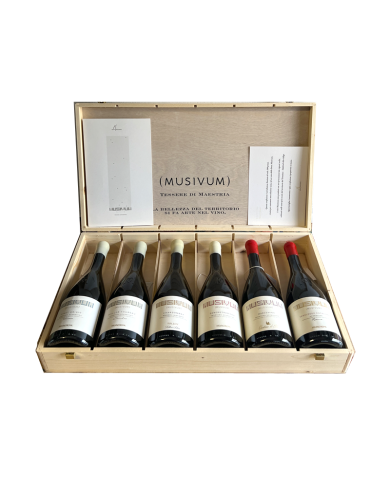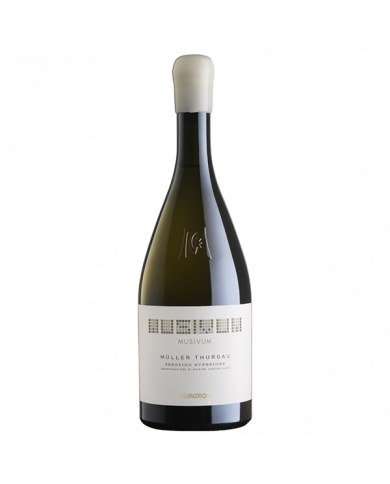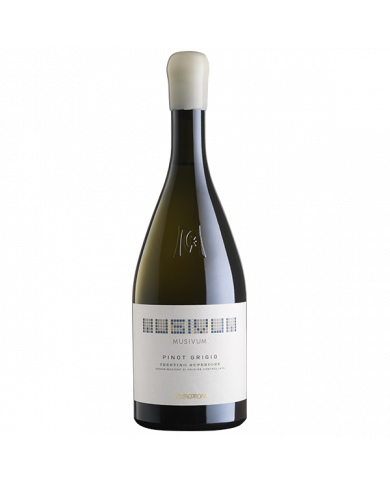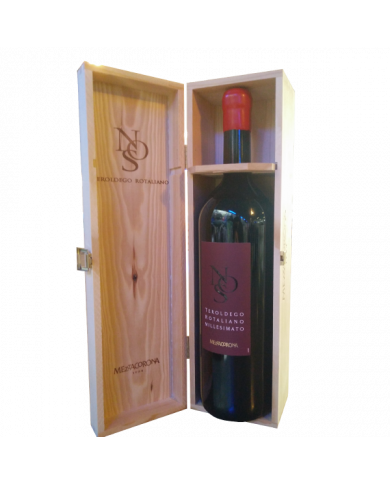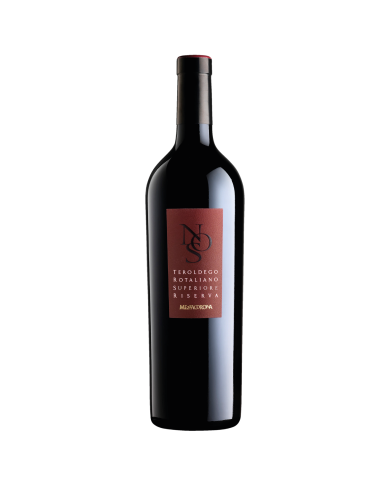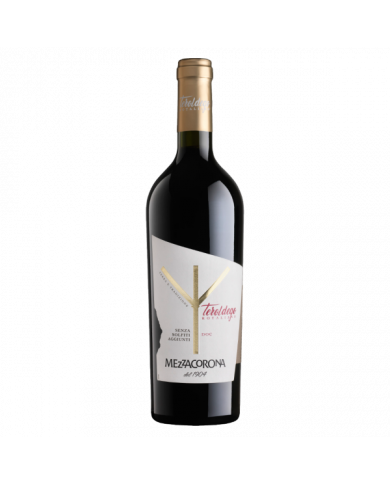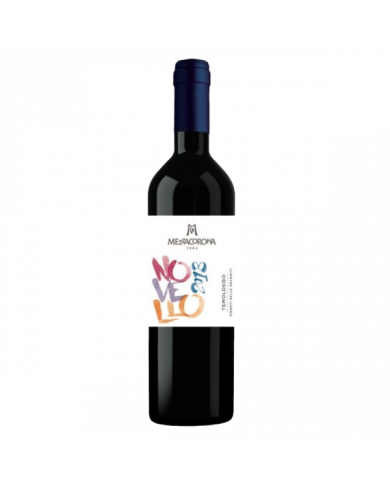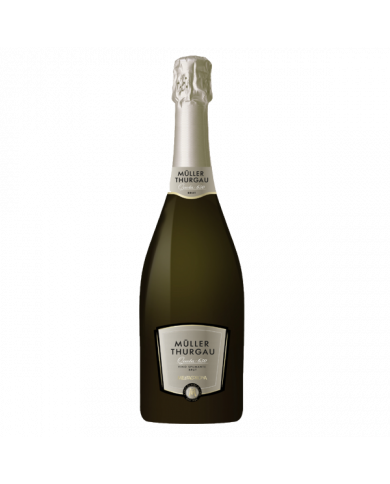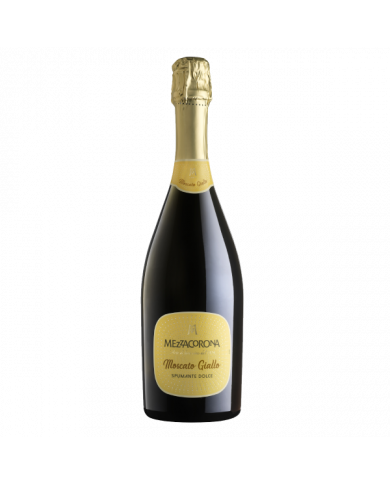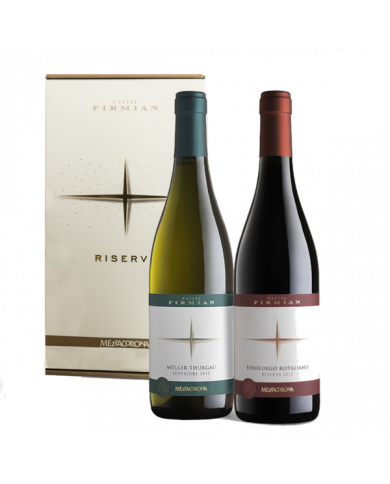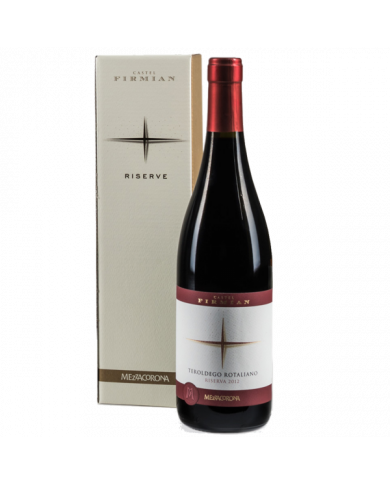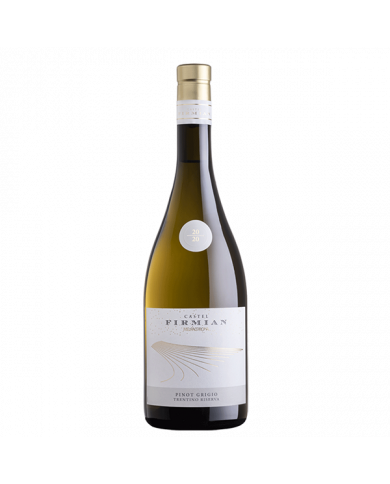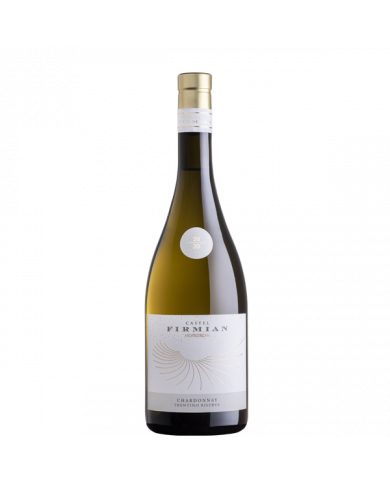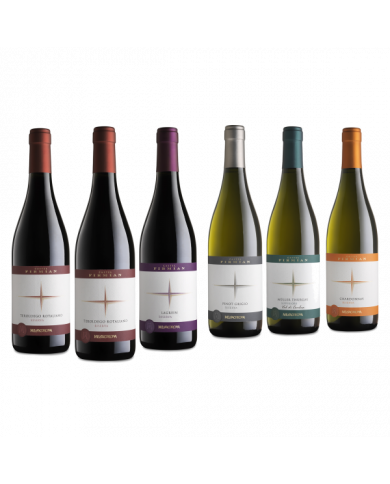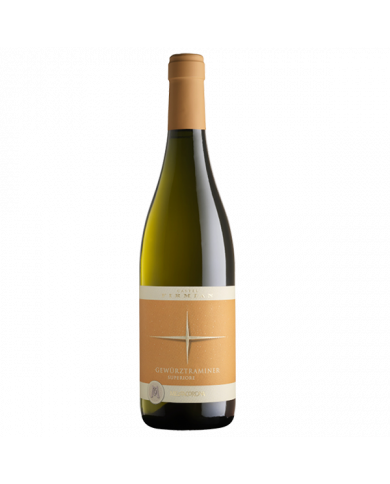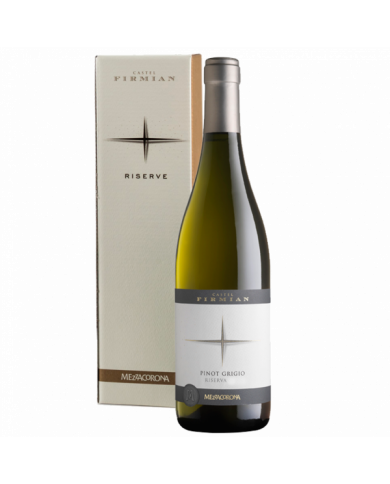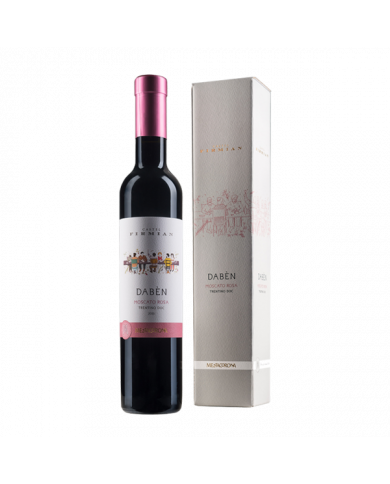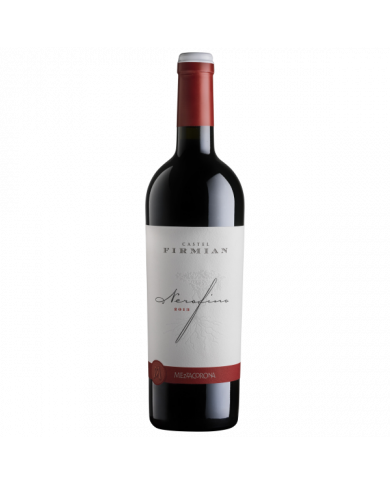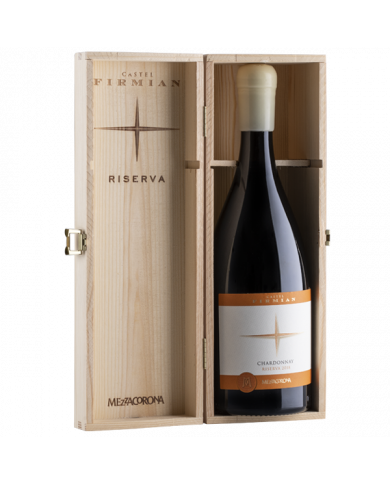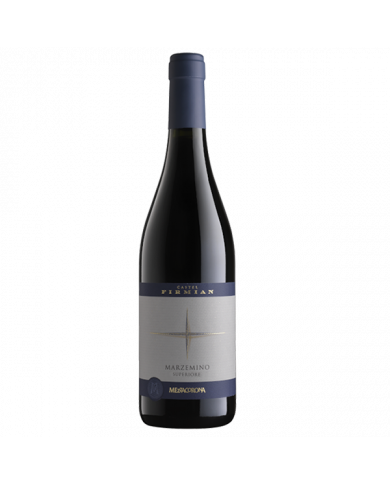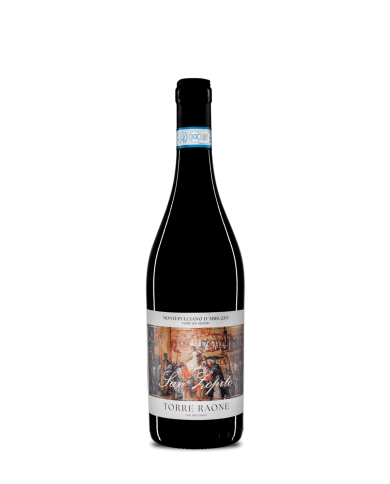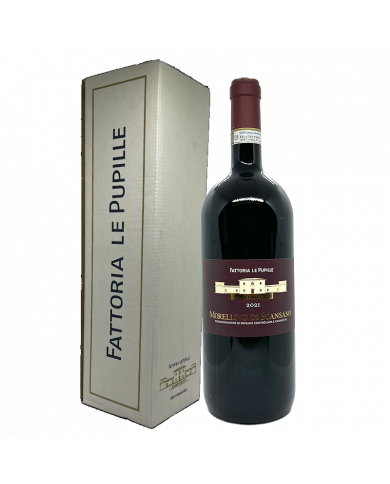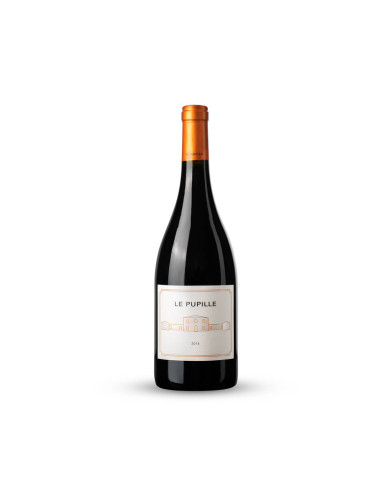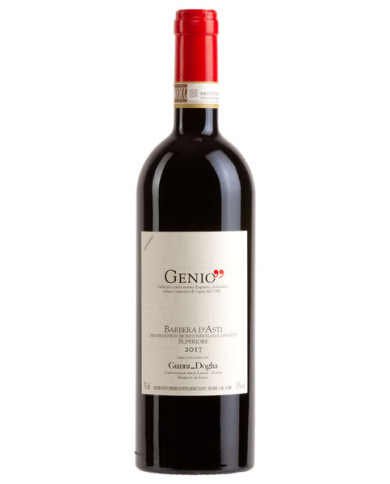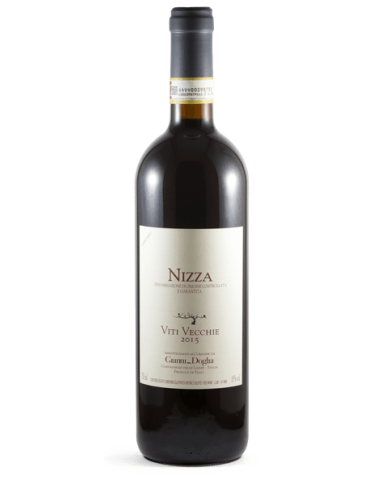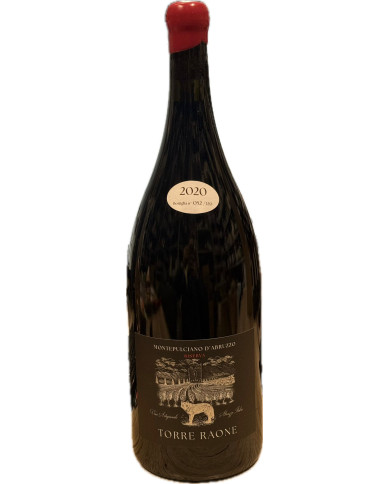In each box: 1 bottle of AlpeRegis Extrabrut Trentodoc, a Millesimato produced only from Chardonnay grapes, which has found the ideal conditions in the Dolomites area for the perfect expression of its character, rigorously harvested by hand, selecting the bunches directly in the vineyard best. Maturation on the lees for at least 48 months. n° 1 bottle of Alpe Regis RosÃĻ Trentodoc, produced only in the best vintages from the selection of the best Pinot Noir (90%) and Chardonnay (10%) grapes coming exclusively from our vineyards in the hilly areas of the Adige Valley north of Trento .
From the best Trentino sparkling wine tradition combined with the Rotari winemaking style, AlpeRegis Trentodoc is born, a special vintage dedicated to lovers of good food and good living. The name evokes the royal figure of Rotari and a strong reference to the Alpine territory which has contributed to making Rotari legendary by setting his deeds in history. AlpeRegis is a Millesimato produced exclusively from Chardonnay grapes, an international variety that has found the ideal conditions in the Dolomites area for the perfect expression of its character, rigorously harvested by hand, selecting the best bunches directly in the vineyard. Maturation on the lees for at least 48 months. The Alpe Regis DoppioMagnum is shipped in an elegant wooden box of 1 bottle protected by cardboard packaging
From the best Trentino sparkling wine tradition combined with the oenological style of Rotari , AlpeRegis Trentodoc is born, a special vintage dedicated to lovers of good food and good living. The name evokes the Royal figure of Rotari and a strong reference to the Alpine territory that has contributed to making Rotari legendary by fixing its deeds in history.
Produced only with selected and hand-harvested grapes from its own vineyards in the most suitable hilly areas of Trentino, Rotari CuvÃĐe 28 owes its name to its long aging on the lees, which gives it a strong but elegant, fresh and persistent character. Brut blanc de blancs with an intense and elegant aroma of ripe yellow fruit with notes of hazelnut and a sweet touch of vanilla. With over 36 months of aging on the lees, this sparkling wine offers great balance between structure and acidity with a pleasant freshness and a mineral finish.
From the best Trentino sparkling wine tradition combined with the Rotari winemaking style, AlpeRegis Trentodoc is born, a special vintage dedicated to lovers of good food and good living. The name evokes the royal figure of Rotari and a strong reference to the Alpine territory which has contributed to making Rotari legendary by setting his deeds in history. Millesimato produced from selections of Pinot Noir and Chardonnay grapes with maturation on the lees for at least 36 months. It is harvested rigorously by hand, selecting the best bunches directly in the vineyard. The Alpe Regis Magnum is shipped in an elegant wooden box of 1 bottle protected by cardboard packing
From the best Trentino sparkling wine tradition combined with the Rotari winemaking style, AlpeRegis Trentodoc is born, sparkling wines dedicated to lovers of good food and good living. The name evokes the royal figure of Rotari and a strong reference to the Alpine territory which has contributed to making Rotari legendary by setting his deeds in history. The elegant wooden case contains 3 bottles of Rotari Alpe Regis and 3 bottles of Rotari Alpe Regis RosÃĻ
Produced only with selected and hand-harvested grapes from its own vineyards in the most suitable hilly areas of Trentino, Rotari CuvÃĐe 28 owes its name to its long aging on the lees, which gives it a strong but elegant, fresh and persistent character. Brut blanc de blancs with an intense and elegant aroma of ripe yellow fruit with notes of hazelnut and a sweet touch of vanilla. With over 36 months of aging on the lees, this sparkling wine offers great balance between structure and acidity with a pleasant freshness and a mineral finish.
Second limited edition for Rotari 40. It is a special, unique product, dosed with a liqueur d'expÃĐdition made according to the Cellar's ancient recipe. A Blanc de Blancs, that is to say a 100% Classic Method, obtained with the best Chardonnay grapes selected in our hillside vineyards north of Trento. In fact, here we find unique climatic conditions: the calcareous soil of dolomitic origin, the average altitude of about 400 meters slm and the excellent exposure to the sun. The vineyards are also caressed by a refreshing alpine breeze which allows the natural preservation of the crunchiness and aromatic intensity of the grapes. Thanks to the combination of all these factors, Rotari 40 releases unique organoleptic characteristics and intense aromas. The 2013 vintage was excellent. It was the latest vintage in the last 20 years, allowing the grapes to ripen in late September: the temperature range gave the grapes freshness and crunchiness, giving a particular liveliness to the sparkling bases, all to the advantage of the longevity of the product.
From the best Trentino sparkling wine tradition combined with the Rotari winemaking style, AlpeRegis Trentodoc is born, sparkling wines dedicated to lovers of good food and good living. The name evokes the royal figure of Rotari and a strong reference to the Alpine territory which has contributed to making Rotari legendary by setting his deeds in history. The elegant wooden case contains: 2 bottles of Rotari Alpe Regis Extrabrut 2 bottles of Rotari Alpe Regis RosÃĻ 2 bottles of Rotari Alpe Regis Pas Dose'
AlpeRegis Trentodoc is born from the best Trentino sparkling wine tradition combined with the winemaking style of Rotari , a special vintage dedicated to lovers of good food and good living. The name evokes the royal figure of Rotari and a strong reference to the Alpine territory which has contributed to making Rotari legendary by setting his deeds in history. AlpeRegis Pas DosÃĐ is produced exclusively from Chardonnay grapes and stands out for its maturity and balance. Aging of 60 months on the lees. The grapes are harvested at a more advanced stage of maturation than other sparkling wine bases. This has made it possible to obtain base wines with more controlled acidity, but still fragrant in terms of aromatic freshness. The total malolactic fermentation of the base wine has further reduced the acidity to the advantage of the softness and fullness of the flavour. The choice of tirage yeast was made by favoring certain strains which bring roundness to the taste thanks to the release of mannoproteins. The Alpe Regis Pas DosÃĻ magnum is shipped in a gift box of 1 bottle, protected with cardboard packaging
It is produced with 100% Chardonnay grapes, rigorously harvested and selected by hand. The first fermentation, which takes place partly in steel and partly in barrique, is followed by 5 months refinement in the same containers and second fermentation, by refermentation in the bottle, with a full 5 years refinement on its own yeasts.
The production area chosen for the Chardonnay Musivum is located in Alto Adige and includes various locations: mainly in the municipality of Salorno, MagrÃĻ and Egna. The characteristics of the area, inclined to maintain high acid content, are ideal for the cultivation of Chardonnay which manages to reach high sugar levels. Another peculiarity of this area, ideal for growing grapes, is the microclimate characterized by good wind â which avoids dangerous stagnation of humidity and guarantees rapid drying of the grapes after the rains â and by an insolation throughout the day. Production begins with a slightly delayed manual harvest to enhance the aromatic richness of this variety. In the Cellar, the individual containers are distinguished on the basis of the characteristics of the grapes, so as to diversify the vinification process. All the grapes are cooled in the cell at 2-3°C. The following days those with a yellow/golden color are removed from the stalks and left to rest in the press for 4/5 hours in contact with the skins (cryomaceration) to increase the extraction of the aromatic precursors of this variety. The yellow/green colored grapes are instead de-stemmed and immediately subjected to soft pressing. From both portions a free-run must is obtained which is followed by natural decanting. The start of fermentation takes place in special stainless steel tanks, specially designed for the " Musivum " project, with selected yeasts and with a progressive and controlled increase in temperature from 14° to 18°C. Once fermentation has started, 65% of the volume continues its journey in the new barrique cellar: 50% in second passage oak barrels, where it remains for the refinement phase and the other 15% is aged in new French oak barriques at medium roast. The remaining 35% completes the fermentation in steel. During the refinement the 3 portions are kept separate, with frequent movements of the fine lees, up to 2 months before bottling, when they are brought together to amalgamate the different components, i.e. those fermented and aged in the various woods with the one fermented and aged in steel .
The vineyards selected for the production of GewÞrztraminer Musivum were chosen within the most suitable areas in Trentino for the cultivation of this variety: the hills surrounding the villages of Faedo, Sorni and Pressano at an altitude of 300 -500 meters above sea level sea level. The origin of the variety is still controversial: to date, the two main wine-growing regions where it is grown â Alsace and Trentino-Alto Adige-SÞdtirol â dispute its paternity. The presence of a town named "Tramin" - "Termeno" in Trentino-Alto Adige strengthens the hypothesis that the homeland of this extraordinary vine is precisely our region. In German, the term âGewÞrzâ means âspicyâ, as evidence of the particular aromaticity of this coppery berried grape which makes it unique and difficult to imitate. From a viticultural point of view, its cultivation represents a challenge to always keep its quality level very high. For this reason it is grown only in areas that enhance its particular characteristics, i.e. hills that are well exposed, but not too hot and with a marked temperature range, therefore located at a significant altitude to favor the generation of typical aromas and their precursors. The variety also requires a particular dedication in terms of hours of work in the vineyard. The harvest takes place in the second half of September: the period varies according to the altitude and exposure of the vineyard. To allow the formation of the typical aromas of GewÞrztraminer, the grapes tend to be slightly over-ripened: the 2018 vintage allows the harvesting of perfectly ripe grapes, still fragrant and with exceptional aromas. The grapes harvested in perforated containers are partly sent immediately for crushing and partly cooled in refrigerate.Prima cells. Before pressing, the grapes are destemmed, crushed and cooled, then cryomaceration (or cold maceration) takes place in order to prolong the contact of the must with the skin where the typical aromas are located; the low temperature makes it possible to extract the most valuable aromas and substances while minimizing the extraction of tannins which can give astringency and bitter sensations. Fermentation begins at a low temperature to further enhance the aromaticity of the varietal, continues and ends slowly at a controlled temperature of 18°C. For this variety it is essential to use particular yeasts, carefully selected, which are able to enhance the richness and aromatic complexity natural. At the end of fermentation, the wine remains in contact with its yeasts which release new aromas and protect it from oxidation, until bottling.
Elegant 6-bottle wooden case that contains a tasting of the entire Musivum line. 4 wines that are the most authentic expression of the charm of the Trentino area and of the age-old art of making wine: n°1 bottle of PINOT GRIGIO TRENTINO DOC SUPERIORE: complex, fragrant and persistent wine that seduces with a fusion of white fruit aromas perfectly ripe, such as pear and white peach, integrated into notes of sun-dried citrus, chamomile, Swiss pine and rhododendron honey. n° 1 bottle of MULLER THURGAU TRENTINO DOC SUPERIORE CEMBRA which enchants with its haymaking bouquet of alpine aromatic herbs such as thyme, sage and wild mint, completed by white flowers and clover. n° 1 bottle of CHARDONNAY ALTO ADIGE DOC: rich, powerful and ample wine that releases intriguing floral scents of linden honey and acacia, with nuances of ginger mustard. n° 1 bottle of GEWURZTRAMINER TRENTINO DOC SUPERIORE: intriguing wine, with its palette of perfumes, all intense as notes of rose petal, spicy white flowers and ripe yellow fruit, enriched by hints of aromatic spices. n1 Marzemino Trentino Superiore DOC - n1 Teroldego Rotaliano Superiore Riserva DOC.
The MÞller Thurgau Musivum grapes come from two different Cembran areas characterized by optimal exposure and altitude. The two vineyards are harvested separately, a few days later than the average ripening. The grapes are harvested in the early hours of the morning to preserve their freshness thanks to the low temperatures; the harvest is carried out rigorously by hand, selecting the individual bunches in the field. The conferment takes place in perforated containers and the bunches are kept in a cold room for one night, in order to enhance and transfer the aromas present on the peel to the future must. For the same purpose, they are subjected to cryomaceration in the press for 4-5 hours at a temperature below 10°C. With a special pressing program, oxidation of the extracted must is avoided. This must is left in the tank for several days (cold housing), with periodic suspension of the lees, so that the fibers and solid particles from the skins and pulp can still release their aromatic components to the must. Once the flotation has been carried out to remove these particles, the musts are inoculated with different yeasts between the two batches, and in any case aromatically neutral - so as to best respect the primary aromas of the vine - and fermented at about 17°C until complete consumption of the sugars. The two cuvÃĐes are then aged for three months separately and then, once combined, the wine is aged for another year on the fine lees, always in small steel tanks. After bottling, there is an aging period of at least six months in the bottle.
The production area of Pinot Grigio Musivum Vicinia is in the municipality of Mezzocorona. The area was first cultivated with vines in the 1950s. The soils therefore have a limited cultivation area and a rather superficial groundwater between 50 and 100 cm, and the soil type is silty. They have a sufficient supply of water even in periods of drought and good fertility, essential characteristics for Pinot Grigio, a rather weak variety. Furthermore, Vicinia is a very precocious area, as it leans against imposing rock walls which guarantee protection from cold winds in the late winter and early spring periods and have a warming effect during all the vegetative phases, reflecting the sun's heat. The production starts with a slightly delayed harvest to enhance the varietal characteristics and aromatic richness. The grapes are harvested manually in the early hours of the day to preserve their freshness thanks to the low temperature, with the selection of each individual bunch in the field; they are then transported to the cellar in perforated containers to guarantee the best fragrance and integrity of the bunches. In the Cellar the grapes are subjected to soft pressing to obtain a flower must which is followed by natural decanting. Fermentation takes place with selected yeasts at a controlled temperature of 18°C in special stainless steel tanks specially designed for Musivum . 50 %del volume completes the last third of the fermentation in the barrique cellar, in 50 hl second passage oak barrels, where it also remains for the refinement phase. The other half, on the other hand, completes the fermentation in steel, where it continues with the refinement phase on the lees. During the refinement, the fine lees consisting mainly of yeasts are put back into suspension every 15 days for the first 3 months and every 2 months thereafter , until the time of re-assembly of the two portions, i.e. the fraction partially fermented and aged in wood with the one fermented and aged in steel
This wine has the sun inside. It reflects it in its intense yellow color and in the aromas that smell of midsummer. It is the result of careful care in the countryside. For this wine we select only the best grapes from our vineyards in the mild and sunny areas of Lake Garda.
This MÞller Thurgau Superiore comes from the tenacity of our winemakers in the Val di Cembra. The selected vineyards are located on the steep slopes of Giovo, between 650 and 750 m and well exposed to the southwest. The soils of calcareous origin give an elegant minerality well integrated with the floral scents of the grapes and the aromas generated by the yeast during the fermentation and the 6-month refinement. The grapes are harvested in late September, subjected to cold maceration for 5-8 hours and then pressed. The must, after natural cold decantation, is fermented at a low temperature. Once fermentation is complete, the wine spends the autumn and winter on its lees until it is bottled.
The Teroldego vine is a native variety of Trentino and finds its ideal development environment in the Piana Rotaliana. The word "Teroldego" seems to derive from "Tiroler Gold" (gold of Tyrol), the name by which this wine was indicated at the Court of Vienna during the Austro-Hungarian empire; from this denomination âTiroldicoâ would later derive and later, Teroldego. Among the Trentino red wines it is the most renowned, so much so that it is defined as the "prince wine of Trentino". The Riserva di Teroldego is produced only in great vintages from carefully selected grapes by hand in the most suitable areas of the Piana Rotaliana: "Fron", "Rauti", "Camorzi" and "Sottodossi". The grapes are pressed with separation of the stalks. The seeds are partially removed, followed by maceration on the skins with frequent pumping over and fermentation at a controlled temperature of around 25°C for 12-13 days. Minimum 24 months of maturation, of which 12 in precious oak wood (Allier and Troncais) followed by refinement in the bottle.
The Teroldego vine is a native variety of Trentino and finds its ideal development environment in the Piana Rotaliana. The word "Teroldego" seems to derive from "Tiroler Gold" (gold of Tyrol), the name by which this wine was indicated at the Court of Vienna during the Austro-Hungarian empire; from this denomination âTiroldicoâ would later derive and later, Teroldego. Among the Trentino red wines it is the most renowned, so much so that it is defined as the "prince wine of Trentino". The Riserva di Teroldego is produced only in great vintages from carefully selected grapes by hand in the most suitable areas of the Piana Rotaliana: "Fron", "Rauti", "Camorzi" and "Sottodossi". The grapes are pressed with separation of the stems. The seeds are partially removed, followed by maceration on the skins with frequent pumping over and fermentation at a controlled temperature of around 25°C for 12-13 days. Minimum 24 months of maturation, of which 12 in precious oak wood (Allier and Troncais) followed by refinement in the bottle.
The Pinot Grigio variety has been cultivated for a long time in the Adige Valley, where it is also known under the name of RulÃĪnder. The shape of the bunches and their "copper gray" color reveal its close relationship with the Pinot Noir from which it seems to derive. It prefers soils with moderate fertility both on the valley floor and on low hills. Pinot Grigio RISERVA comes from grapes grown in the vineyards of one of the most classic and suitable areas for this variety: called "Zablani", it is located north-east of the town of Mezzocorona and is characterized by well-drained alluvial soil, very similar to that of the adjacent classic area of Teroldego. The grapes are harvested by hand and delivered within a few hours to the cellar, where they are selected, immediately pressed and sent to the cold maceration and soft pressing stage. The alcoholic fermentation at a controlled temperature (16-18° C) can last between 12 and 15 days. More precisely, part of the Pinot Grigio is fermented in steel (40%) while the remaining 60% is fermented in barrique. After fermentation, the wine remains in barriques for 6-8 months, during which periodic "batonage" operations are performed (resuspension of the yeast deposits). Between the 10th and 11th month, the wine fermented in steel and the wine fermented in wood are assembled, thus obtaining a product with the typical notes of vanilla and ripeness, but also with the freshness and fragrance typical of Pinot Trentino grey.
The Chardonnay Riserva comes from a selection of the best vineyards grown on the slopes of the Trentino mountains between 250 and 500 m above sea level. The preferred soils are of alluvial and draining origin. The grapes are harvested well ripe and characterized by a golden yellow colour, an indication of high aromatic richness. The skilful blending of wines obtained from vineyards located at various altitudes and with different exposures results in a wine that is ripe and rich but also fresh and fragrant. The grapes are harvested in September, partly subjected to cold maceration to increase the extraction of aromas and subsequently subjected to soft pressing. The must is fermented with the addition of selected yeasts, half in steel and half in lightly toasted French oak. The wines mature for 8 months in wood and 4 months in steel. The part that ages in barrique also carries out the malolactic fermentation and repeated batonage (resuspension of the fermentation yeasts) is carried out. Finally, 3-4 months of aging in the bottle follow.
This GewÞrztraminer Superiore comes from a selection of grapes from the best vineyards grown on our hills at various altitudes between 300 and 450 m, with exposures ranging from south-east to south-west. The loose soils of calcareous origin give an elegant structure and a great aromatic richness, well integrated by the floral scents of the grapes and the aromas generated by the cold maceration and by the âsur liesâ refinement. In late September the grapes are harvested, selected by hand by eliminating the bunches that are not perfectly ripe and cold macerated directly in a soft press for 24 hours. The must, after a long natural decantation at a low temperature which allows the varietal aromas to be released, is fermented at a low temperature at 16-18°C with yeasts specially selected for this variety. Once fermentation is complete, the wine spends the autumn and winter on its lees in stainless steel tanks until it is blended.
The Pinot Grigio variety has been cultivated for a long time in the Adige Valley, where it is also known under the name of RulÃĪnder. The shape of the bunches and their "copper gray" color reveal its close relationship with the Pinot Noir from which it seems to derive. It prefers soils with moderate fertility both on the valley floor and on low hills. Pinot Grigio RISERVA comes from grapes grown in the vineyards of one of the most classic and suitable areas for this variety: called "Zablani", it is located north-east of the town of Mezzocorona and is characterized by well-drained alluvial soil, very similar to that of the adjacent classic area of Teroldego. The grapes are harvested by hand and delivered within a few hours to the cellar, where they are selected, immediately pressed and sent to the cold maceration and soft pressing stage. The alcoholic fermentation at a controlled temperature (16-18° C) can last between 12 and 15 days. More precisely, part of the Pinot Grigio is fermented in steel (40%) while the remaining 60% is fermented in barrique. After fermentation, the wine remains in barriques for 6-8 months, during which periodic "batonage" operations are performed (resuspension of the yeast deposits). Between the 10th and 11th month, the wine fermented in steel and the wine fermented in wood are assembled, thus obtaining a product with the typical notes of vanilla and ripeness, but also with the freshness and fragrance typical of Pinot Trentino grey.
The Moscato Rosa vine is a very ancient vine, of probable Greek origins which, passing through Sicily, arrived in Trentino in the mid-nineteenth century. The name seems to derive more from the primary aroma of rose that characterizes this aromatic vine, than from the color of the berry, which is actually bluish-black. Moscato Rosa is very delicate to cultivate as it is subject to various problems in flowering and ripening which greatly reduce its production capacity. For all these reasons, as well as being noble, it is also a precious wine, also due to its great ability to accumulate large quantities of sugar. This wine is obtained from small vineyards located on the alluvial fan of the town of Pressano, north of Trento, at about 250-300 metres, facing south-southwest on clayey-limestone soils and in a well-ventilated area to avoid health problems and allow the grapes the achievement of a perfect level of aromatic and sugar ripening. The grapes are harvested by hand very late after a natural drying on the vine and, after destemming, are subjected to traditional vinification with the addition of selected yeasts at a temperature of 22-24°C for 6-8 days. Then with the use of cold (5°C), the fermentation process is naturally blocked with the consequent maintenance of the desired residual sugar. It then continues with the collection of only flower wine without pressing of the pomace. This is followed by conservation in steel for a few months, always at a low temperature to preserve the aromas of this elegant wine
This wine comes from a perfect marriage between the two most important and renowned red grape varieties of Trentino: Teroldego (50%) and Lagrein (50%). Teroldego found its cradle in Piana Rotaliana which, due to its geological and climatic uniqueness, gives the "prince of Trentino" all the essential characteristics to obtain a wine with ripe fruitiness and powerful structure. Lagrein found its way along the hills above the Adige river where, benefiting from rockier and well-draining soils, it expresses itself with a fragrant aromatic profile and a delicate body that tames the tannic vehemence of Teroldego. The historical form of cultivation of these two Trentino vines called "pergola", in its "simple" form for the Lagrein and in the "double" form for the Teroldego, favors excellent exposure of the bunches to the sun guaranteeing excellent ripening without risk of burns of the grapes. The Teroldego grapes are vinified according to the classic red winemaking technique, at a temperature of 26°C for 12-13 days with the addition of selected yeasts. The Lagrein grapes are instead fermented at a temperature of 24°C for 8 days with the addition of selected yeasts. Then half aliquot of the two wines ages for 6 months in French oak barriques with a 3-year seasoning and light toasting, in order to respect their rich fruitiness. Another 12 months of aging between steel and bottle are then required.
The Chardonnay Riserva comes from a selection of the best vineyards grown on the slopes of the Trentino mountains between 250 and 500 m above sea level. The preferred soils are of alluvial and draining origin. The grapes are harvested well ripe and characterized by a golden yellow colour, an indication of high aromatic richness. The skilful blending of wines obtained from vineyards located at various altitudes and with different exposures results in a wine that is ripe and rich but also fresh and fragrant. The grapes are harvested in September, partly subjected to cold maceration to increase the extraction of aromas and subsequently subjected to soft pressing. The must is fermented with the addition of selected yeasts, half in steel and half in lightly toasted French oak. The wines mature for 8 months in wood and 4 months in steel. The part that ages in barrique also carries out the malolactic fermentation and repeated batonage (resuspension of the fermentation yeasts) is carried out. Finally, 3-4 months of aging in the bottle follow.
Trentino Marzemino Superiore is born from the best vineyards of the hills of Ala where the Adige in its passage has enriched the soils created by the glaciers that have carved the dolomitic rocks of the Pre-Alps. In this wine the primitive varietal notes are united in an indissoluble union with the more evolved hints of fermentation processes. Once the perfect ripening of the grapes has been verified in the vineyard, a first fraction of the bunches is handpicked for drying in a room at controlled temperature and humidity. During this period, which lasts about 70 days, the grapes ripen and evolve, releasing unexpected aromas and velvety sensations. At the end of the cycle, the bunches are destemmed, crushed and the must obtained is left to ferment in steel at a controlled temperature of 25 - 28°C with selected yeasts for this type of wine. The remaining portion of grapes is harvested as late as possible compatibly with the climatic evolution of the season and the state of health. Also in this case the grapes are destemmed and left to ferment in stainless steel containers at a strictly controlled temperature of 25-28°C by inoculating specific selected yeasts. Once the fermentations are complete, the two batches are left to rest in steel containers awaiting their assembly and maturation in the bottle
Discover the excellent wines of Trentino-Alto Adige: A journey through the precious traditions of this region!
Located in the northeastern corner of Italy, Trentino-Alto Adige is known for its unique wine excellences. The region is known for its fine wines, ranging from sweet whites to full-bodied reds, and for its treasured winemaking traditions that have developed over the centuries. If you are a wine lover or a tourist looking for a unique experience, exploring the excellent wines of Trentino-Alto Adige is certainly an activity not to be missed.
The history and winemaking traditions of Trentino-Alto Adige
The winemaking traditions of Trentino-Alto Adige date back to the times of the Roman Empire, when this region was an important producer and merchant of wine. Today, the region is still a major producer of fine wines, thanks to its diverse climates, quality soils, and long history of winemaking.
Over the centuries, the winemaking traditions of Trentino-Alto Adige have been influenced by various peoples who have colonized the region, such as the Celts, the Lombards and the Byzantines. Most of the wines produced in the region were influenced in some way by these peoples, and the winemaking traditions of Trentino-Alto Adige have remained intact ever since.
The main grape varieties of Trentino-Alto Adige
Trentino-Alto Adige is rich in local grape varieties, each with its own unique characteristics and tastes. The grape varieties most commonly grown in the region are MÞller-Thurgau, Pinot Blanc, GewÞrztraminer, Lagrein, Pinot Noir and Schiava. Each of these grape varieties produces a unique wine, characterized by notes of fruit, spices, herbs and honey.
Trentino-Alto Adige is also known for its sweet wines, such as Schiava, a slightly sweet red wine variety, and GewÞrztraminer, a sweet white wine with exotic fruit notes. These wines are ideal to combine with cheese-based dishes, cold cuts and fish-based dishes.
How to visit the cellars of Trentino-Alto Adige
If you are interested in visiting the cellars of Trentino-Alto Adige, there are many ways to do it. You can take part in an organized tour, in which an expert guide will accompany you to discover the excellent wines of the region. Alternatively, you can always organize an independent visit to the cellars of the region, tasting the fine wines and savoring the unique atmosphere of Trentino-Alto Adige.
An experience not to be missed
Exploring the excellent wines of Trentino-Alto Adige is a unique experience. The region is rich in history, culture and winemaking traditions that have been passed down from generation to generation. Take some time to visit the cellars and taste the fine wines of the region: it will be an unforgettable experience!
Wines from Trentino-Alto Adige
Trentino-Alto Adige is a region in northern Italy known for its mountainous landscapes, castles and fine wines. Some of the most renowned wines in Italy are produced here, thanks to the geographical position of the region and the particular climatic conditions. In this article, we will explore the wines of Trentino-Alto Adige , their characteristics and their curiosities.
Trentino-Alto Adige is located on the border with Austria and Switzerland, and is divided into two autonomous provinces: Trento and Bolzano. The region is mountainous and extends from the Alps to the border with Austria. The climate is influenced by the north winds and the surrounding valleys, creating a unique environment for the production of wines.
History of wine production in Trentino-Alto Adige
The production of wine in Trentino-Alto Adige dates back to Roman times, when the first vineyards were cultivated in the area. Over the centuries, winemaking has been influenced by many different cultures, including German and Austrian. This has resulted in the production of a variety of unique wines, which have gained an international reputation.
Characteristics of the wines of Trentino-Alto Adige
The wines of Trentino-Alto Adige are known for their elegance, lively acidity and balance. The grape varieties grown in the region are mainly white, such as Pinot Blanc, Chardonnay, Sauvignon Blanc, GewÞrztraminer and MÞller-Thurgau. However, red grapes such as Schiava, Lagrein and Teroldego are also very popular.
The best wines of Trentino-Alto Adige
One of the most famous wines of Trentino-Alto Adige is Pinot Grigio, a dry white wine with a fresh and fruity flavour. GewÞrztraminer is another fine white wine, with spicy notes and an intense aroma. As for red wines, Teroldego Rotaliano is one of the best. It is a red wine with an intense flavor and a deep ruby colour.
The production of wine in Trentino-Alto Adige
The production of wine in Trentino-Alto Adige is a very careful and scrupulous process. The region has many wineries, large and small, who work with passion to produce the best wines. Many of these wineries are family-run and use traditional production techniques.
Soils and climatic conditions
The Trentino-Alto Adige region is characterized by an alpine climate, with cool summers and cold winters. The soils are mainly rocky and rich in minerals, which favors the production of high quality wines. Furthermore, the surrounding valleys create microclimates which influence the ripening of the grapes and the flavor of the wines.
The denominations of origin of the wines of Trentino-Alto Adige
The wines of Trentino-Alto Adige are protected by various designations of origin, including Trento DOC , Alto Adige DOC and SÞdtirol DOC. These denominations guarantee the quality and origin of the wines, and represent an important promotional tool for the region.
The food-wine pairing
The wines of Trentino-Alto Adige go perfectly with the local cuisine, which is influenced by Austrian and Italian traditions. White wines go well with fish-based dishes, fresh cheeses and vegetable-based first courses. The red wines go well with red meat, wild boar and game dishes.
Curiosities about the wines of Trentino-Alto Adige
The wines of Trentino-Alto Adige are full of interesting curiosities. For example, Moscato Rosa, a sweet and aromatic wine, is only produced in certain areas of the region. Furthermore, GewÞrztraminer is a very fragrant wine, with notes of exotic fruit and spices, which go well with Asian cuisine.
The wines of Trentino-Alto Adige represent a heritage of great value for Italy. The region offers a great variety of fine wines, thanks to its geographical position and particular climatic conditions. The production of wine is a careful and scrupulous process, which involves many family-run wineries. The wines of Trentino-Alto Adige go perfectly with the local cuisine and are an excellent choice for those who want to discover the authentic flavors of the region.
FAQs
What are the main grape varieties grown in Trentino-Alto Adige?
The main grape varieties grown in Trentino-Alto Adige are Pinot Bianco, Chardonnay, Sauvignon Blanc, GewÞrztraminer and MÞller-Thurgau.
What are the best red wines of Trentino-Alto Adige?
The best red wines of Trentino-Alto Adige are Teroldego Rotaliano, Schiava and Lagrein.
What are the denominations of origin of the wines of Trentino-Alto Adige?
The denominations of origin of the wines of Trentino-Alto Adige are Trento DOC , Alto Adige DOC and SÞdtirol DOC.
How do Trentino-Alto Adige wines go well with food?
White wines go well with fish-based dishes, fresh cheeses and vegetable-based first courses, while red wines go well with red meat, wild boar and game dishes.
What are the curiosities about the wines of Trentino-Alto Adige?
There are many curiosities about the wines of Trentino-Alto Adige, for example Moscato Rosa is produced only in some areas of the region, while GewÞrztraminer goes well with Asian cuisine thanks to its spicy notes.

